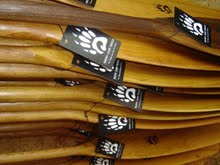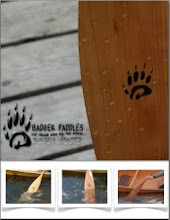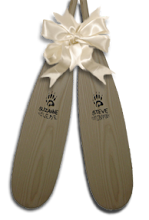tarpaulin |tärˈpôlən; ˈtärpə-|noun1 heavy-duty waterproof cloth, originally of tarred canvas.• a sheet or covering of this.2 historical a sailor's tarred or oilskin hat.• archaic a sailor.ORIGIN early 17th cent.: probably from tar 1 + pall 1 + -ing 1 .tarp |tärp|noun informala tarpaulin sheet or cover.ORIGIN early 20th cent.: abbreviation.New Oxford American Dictionary
There is a list of essential gear that many paddlers abide by. And, although that list may differ a bit according to individual need, if you don't already have a tarp as part of that mandatory gear list, then this week's tip just may change that. A tarp (and some rope) is a great emergency tool and can also greatly improve quality of life around a camp site. Once you realize the number of ways in which a tarp (stuffed anywhere into a boat or pack) can be utilized in any number of situations, then you probably won't want to get caught up the creek, river or lake, without one either.
Some Things You Can Do With A Tarp
- Use it as a ground sheet. (either under your tent to protect the floor or as a "picnic blanket" while you eat).
- Can be used as a substitute tent fly (who hasn't gone on a camping trip where someone forgot their fly?).
- Use it alone as a shelter for sleeping (string some rope between two trees and use rocks and/or logs to keep the sides down)(find 4 trees to substitute as poles and tie the tarp between them, low to the ground and sloping down on one side - to divert water away from you incase it rains).
- Use it as a wind break - create a wall by stringing the tarp between two trees.
- Use it as a rain shelter - create a roof by stretching the tarp between trees - slope the tarp (or find a tall tree-wood pole) so as to not collect rain water and weigh it down in the middle.
- Use it as a sun shelter - tie the tarp off between trees, etc. at an angle away from the sun.
- Make a canoe sail with it (using long tree wood poles usually found on location rigged to your satisfaction) See above photo.
- Use it as a make-shift stretcher to carry a sick/injured person over short distances/portages.
- Use it to collect or catch water for drinking and/or washing.
- Use it in an emergency to help a person retain much needed warmth (by wrapping them in a tarp after putting them in their sleeping bag).
- Can be cut strategically and used as an emergency stand-in rain poncho
- Can be used to make a Bear Burrito* (when hanging your food is not possible).
- Can be used to collect and transport larger amounts of small bits of firewood or to keep firewood dry during a down pour.
- Use it to make an outside area private for the purpose of changing or latrine use (wrap tarp around one or two trees to create a corner stall and secure to other trees on each side).
- Can be used to fashion a quick backpack (put your stuff in the middle of the tarp and wrap it up in a tight roll, add some rope and your imagination and you have yourself a make-shift pack).
- If the tarp is a strong colour visually, it could be used as a way to signal if you become lost or stranded. Find an open area or clearing and spread the tarp out flat on the ground (holding it down with rocks at the corners) so your location can be seen from the air.
- Add some duct tape or tarp clips to your rope bag and who knows where your tarp could take you! See: BLUE TARP KAYAK
 So as you can see, whether you are planning a day paddle or an extended period away in the bush, a tarpaulin can make a huge difference in your trip - especially when it really matters most. We always bring a tarp with us on our paddling adventures and have had to dig it out more then once and were always glad we had it. In fact, having a tarp on hand could possibly help to save our lives one day. And yours too.
So as you can see, whether you are planning a day paddle or an extended period away in the bush, a tarpaulin can make a huge difference in your trip - especially when it really matters most. We always bring a tarp with us on our paddling adventures and have had to dig it out more then once and were always glad we had it. In fact, having a tarp on hand could possibly help to save our lives one day. And yours too.Do you have any tips to share? Send us your tips and paddling advice - and if your tip is featured here - we will send you a free Badger Paddles sticker!!! All you have to do is email us your suggestions.












No comments:
Post a Comment
Don't be shy - at BADGER® Paddles we really dig getting your feedback!